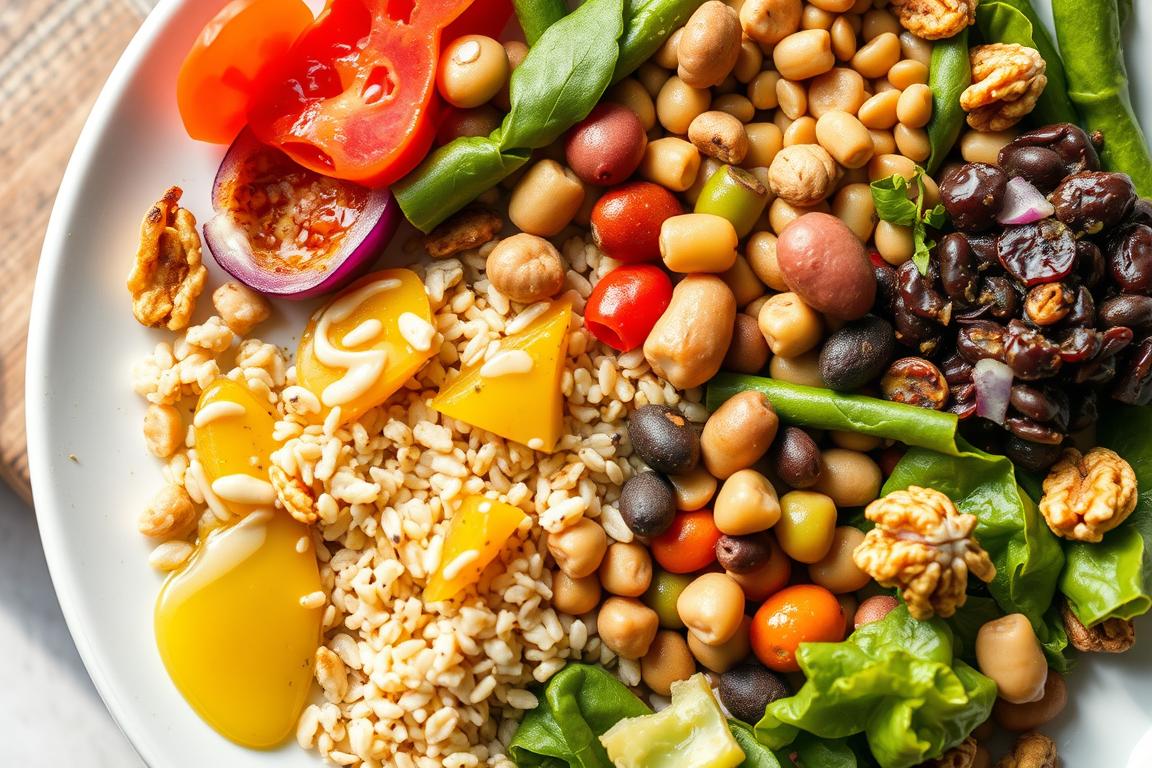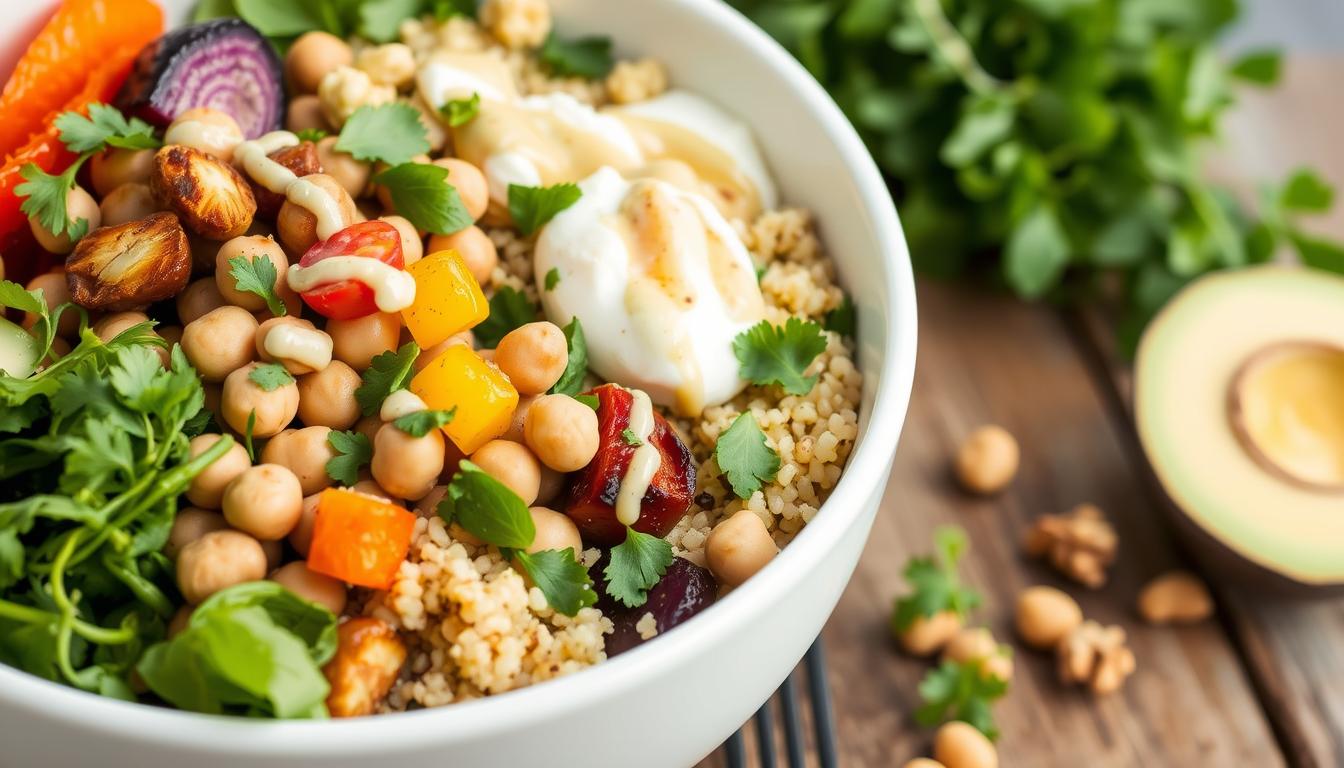Quick Answer: What is the Green Mediterranean Diet?
The Green Mediterranean diet is an enhanced version of the traditional Mediterranean diet that completely eliminates red and processed meats while emphasizing more plant-based foods. It specifically includes daily consumption of green tea, walnuts, and Mankai duckweed (a protein-rich aquatic plant). Research shows this “greener” approach may offer additional benefits for heart health, weight management, and reducing visceral fat compared to the standard Mediterranean diet.
How the Green Mediterranean Diet Works
First introduced by researchers in 2020, the Green Mediterranean diet builds upon the foundation of the traditional Mediterranean diet while making strategic modifications. The primary difference is its stronger emphasis on plant-based foods and significant reduction of animal products.
The diet focuses on consuming polyphenol-rich foods – plant compounds with powerful antioxidant and anti-inflammatory properties. These compounds appear to be key to the diet’s enhanced health benefits, as demonstrated in multiple studies from Ben-Gurion University and other research institutions.

Like the standard Mediterranean diet, the Green version limits calorie intake to 1,200-1,400 calories daily for women and 1,500-1,800 for men. It also emphasizes regular physical activity as an essential component of the lifestyle approach.
Green Mediterranean vs. Traditional Mediterranean Diet: Key Differences
| Feature | Traditional Mediterranean Diet | Green Mediterranean Diet |
| Red meat consumption | Limited (occasional) | Eliminated completely |
| Plant-based focus | High | Very high (almost vegetarian) |
| Green tea | Not specifically required | 3-4 cups daily |
| Walnuts | Included among other nuts | 28g (¼ cup) daily specifically |
| Mankai duckweed | Not included | 100g daily (or equivalent plant protein) |
| Polyphenol content | High | Very high |
According to a 2021 study published in the journal Heart, these modifications appear to amplify the cardiometabolic benefits of the traditional Mediterranean approach. The researchers found that the Green Mediterranean diet led to greater reductions in waist circumference, blood pressure, and inflammation markers compared to both the traditional Mediterranean diet and standard healthy eating advice.
What to Eat on the Green Mediterranean Diet
Foods to Enjoy
- Abundant fresh fruits and vegetables
- Whole grains (brown rice, quinoa, whole wheat)
- Legumes (beans, lentils, chickpeas)
- Nuts and seeds (especially walnuts)
- Olive oil as the primary fat source
- Herbs and spices
- Green tea (3-4 cups daily)
- Mankai duckweed or other plant proteins
- Limited fish and poultry
- Limited dairy products
Foods to Limit or Avoid
- Red meat (eliminated completely)
- Processed meats (eliminated completely)
- Refined grains
- Added sugars
- Processed foods
- Butter and other animal fats
- Excessive salt

If you’re concerned about getting enough protein without red meat, don’t worry. The Green Mediterranean diet provides ample protein through plant sources like legumes, tofu, tempeh, and quinoa. For those who can’t find Mankai duckweed, any high-quality plant protein can serve as a substitute.
Want More Mediterranean Diet Information?
Discover 50+ Green Mediterranean recipes, meal plans, and expert guidance to make your transition to this healthier lifestyle smooth and delicious.
Science-Backed Benefits of the Green Mediterranean Diet
Multiple studies have demonstrated impressive health benefits from following the Green Mediterranean diet. Here’s what the research shows:
Enhanced Weight Loss

A 2022 study published in BMC Medicine found that participants following the Green Mediterranean diet lost twice as much visceral fat (14%) compared to those on the traditional Mediterranean diet (7%).
Improved Heart Health
Research from the DIRECT-PLUS trial showed greater reductions in LDL (bad) cholesterol and blood pressure among Green Mediterranean diet followers compared to the traditional version.
Brain Protection
A 2022 study in The American Journal of Clinical Nutrition found that the Green Mediterranean diet slowed brain atrophy more effectively than the traditional Mediterranean diet, potentially reducing dementia risk.
Reduced Inflammation
Participants following the Green Mediterranean diet showed lower levels of C-reactive protein, a key marker of inflammation linked to numerous chronic diseases.
Better Blood Sugar Control
Studies indicate improved insulin sensitivity among Green Mediterranean diet followers, potentially reducing diabetes risk.
Environmental Benefits
By eliminating red meat, the Green Mediterranean diet significantly reduces greenhouse gas emissions—research shows switching from an omnivorous diet to a plant-forward one can lower personal emissions by up to 35%.
According to researchers from Ben-Gurion University, the high polyphenol content in the Green Mediterranean diet appears to be the key factor behind these enhanced benefits. Polyphenols help reduce fat accumulation, improve fat breakdown, and combat inflammation throughout the body.
Easy Green Mediterranean Recipe: Quinoa Power Bowl

Ingredients:
- 1 cup cooked quinoa
- 1 cup roasted vegetables (bell peppers, zucchini, eggplant)
- ½ cup chickpeas, rinsed and drained
- ¼ cup walnuts, chopped
- 1 handful fresh spinach
- ¼ avocado, sliced
- 2 tablespoons olive oil
- 1 tablespoon lemon juice
- 1 teaspoon dried oregano
- Salt and pepper to taste
For the Walnut-Tahini Dressing:
- 2 tablespoons tahini
- 1 tablespoon finely ground walnuts
- 1 tablespoon lemon juice
- 1 small garlic clove, minced
- 2-3 tablespoons water (to thin)
- Pinch of salt
Instructions:
- Combine cooked quinoa, roasted vegetables, chickpeas, and spinach in a bowl.
- Whisk together olive oil, lemon juice, oregano, salt, and pepper. Drizzle over the bowl.
- For the dressing, mix tahini, ground walnuts, lemon juice, garlic, and salt. Add water gradually until you reach desired consistency.
- Top the bowl with chopped walnuts, avocado slices, and drizzle with the walnut-tahini dressing.
- Serve with a cup of green tea for the full Green Mediterranean experience.
This nutrient-dense bowl provides plant-based protein, healthy fats from olive oil and walnuts, and plenty of polyphenols from the vegetables and herbs—all key components of the Green Mediterranean diet.
Getting Started with the Green Mediterranean Diet
If you’re interested in trying the Green Mediterranean diet, here are some practical tips to help you transition smoothly:
Start Gradually

Begin by reducing red meat consumption while increasing plant-based meals. Try having one or two meatless days per week, then gradually increase.
Focus on Polyphenols
Incorporate polyphenol-rich foods like berries, green tea, walnuts, olive oil, and colorful vegetables into your daily meals.
Monitor Nutrients

Pay attention to iron, vitamin B12, and calcium intake, as these can be lower when reducing animal products. Consider consulting a registered dietitian for personalized guidance.
Remember that while Mankai duckweed is a signature component of the research-based Green Mediterranean diet, it’s not essential. You can substitute other high-quality plant proteins like tofu, tempeh, or legumes if Mankai isn’t available in your area.
Is the Green Mediterranean Diet Healthier?
Based on the current research, the Green Mediterranean diet does appear to offer enhanced health benefits compared to the traditional Mediterranean diet, particularly for heart health, weight management, and brain protection. The higher polyphenol content and complete elimination of red meat seem to be key factors in these improved outcomes.
However, both versions of the Mediterranean diet are significantly healthier than the standard Western diet. The best approach is the one you can maintain long-term. If completely eliminating red meat feels too restrictive, the traditional Mediterranean diet (which limits but doesn’t eliminate red meat) still offers tremendous health benefits.
As with any significant dietary change, it’s wise to consult with a healthcare provider or registered dietitian before starting, especially if you have existing health conditions or concerns about meeting nutritional needs.
Ready to Transform Your Health with the Mediterranean Diet?
Discover expert-crafted meal plans, shopping guides, and delicious recipes that make following the Mediterranean diet simple and enjoyable.
Get well and stay well,
Ray Baker

